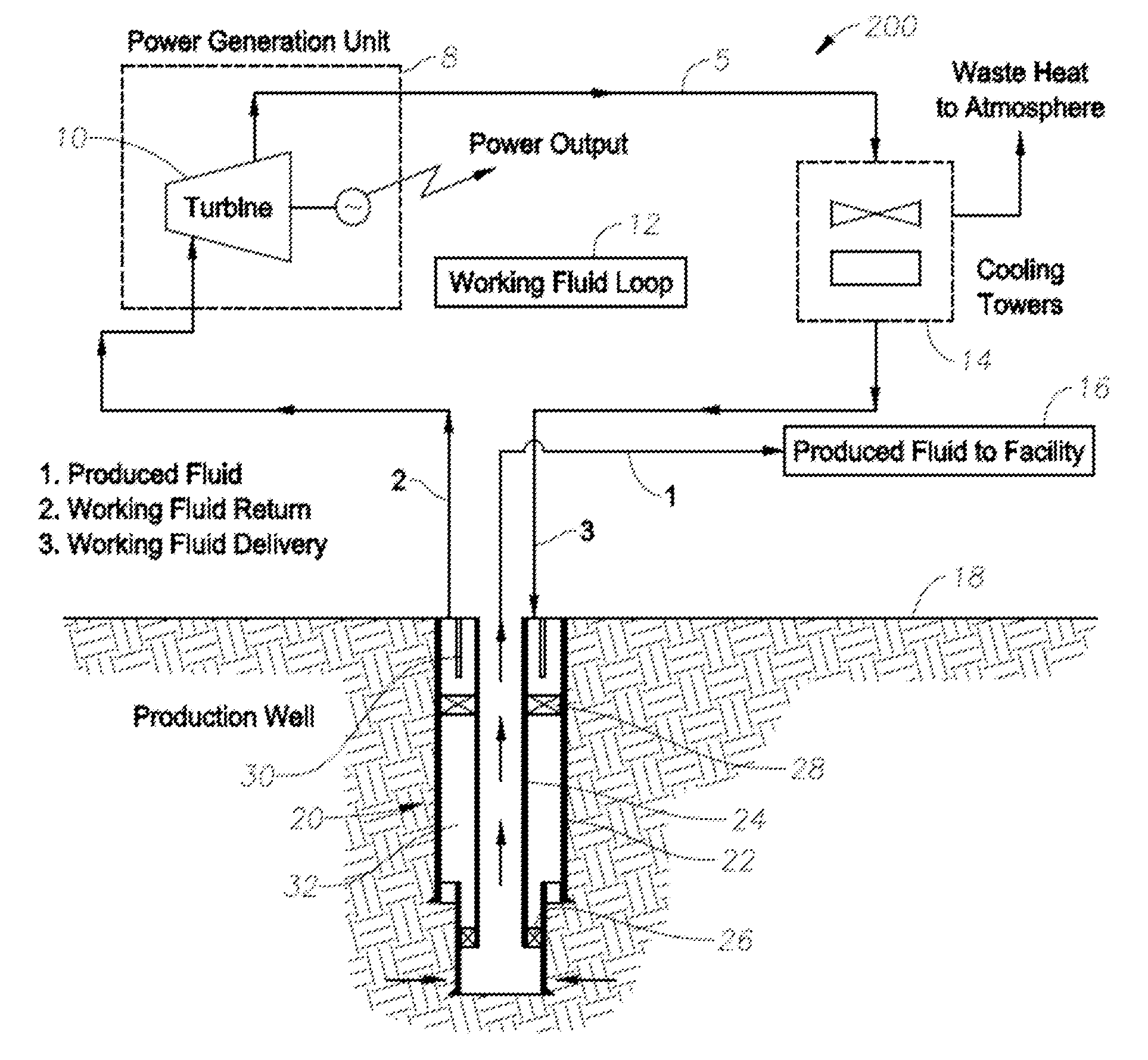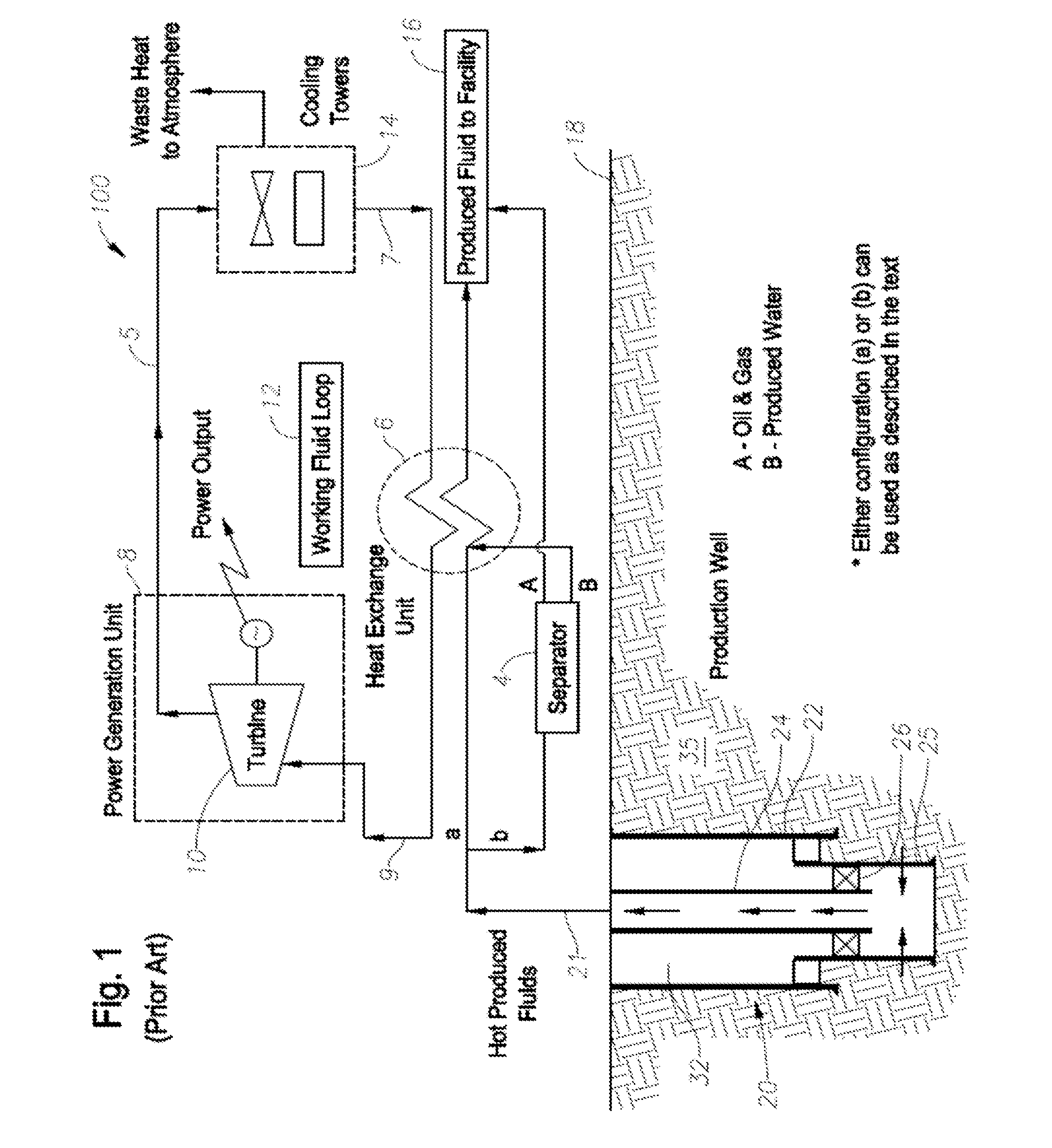Systems and methods for co-production of geothermal energy and fluids
a technology of geothermal energy and co-production, applied in the field of systems and methods, can solve the problems of large heat loss of produced fluids, affecting the economic benefits of co-production, and wasting a large amount of thermal energy from oil and gas production to the atmospher
- Summary
- Abstract
- Description
- Claims
- Application Information
AI Technical Summary
Problems solved by technology
Method used
Image
Examples
examples
Results and Discussion
[0152]Model Verification
[0153]In order to verify the model, results of the model were compared to those from, an industry-standard multiphase flow simulator known under the trade designation WELLFLO8. A standard production well was used for the comparison, with the following assumptions:[0154]Vertical Well[0155]Reservoir depth=10,000 ft[0156]Produced Fluid=Water[0157]Flowrate=10,000 BPD[0158]Bottomhole Temperature=260° F.[0159]Bottomhole Pressure=4150 psi[0160]Production through 7 inch, 32 ppf casing
[0161]Results of the comparison are illustrated in FIG. 4 and Table 1. As the results show, the comparison is excellent.
TABLE 1Exit temperature and pressure comparisonBGSWELLFLO 8Surface Temperature (° F.)245.4242.2Surface Pressure (psi)4858
[0162]The model was also verified against actual results from the Ormat binary power generating unit at the Rocky Mountain Oilfield Testing Center (RMOTC). The geometry and conditions were set to the data available on the RMOTC w...
PUM
 Login to View More
Login to View More Abstract
Description
Claims
Application Information
 Login to View More
Login to View More - R&D
- Intellectual Property
- Life Sciences
- Materials
- Tech Scout
- Unparalleled Data Quality
- Higher Quality Content
- 60% Fewer Hallucinations
Browse by: Latest US Patents, China's latest patents, Technical Efficacy Thesaurus, Application Domain, Technology Topic, Popular Technical Reports.
© 2025 PatSnap. All rights reserved.Legal|Privacy policy|Modern Slavery Act Transparency Statement|Sitemap|About US| Contact US: help@patsnap.com



